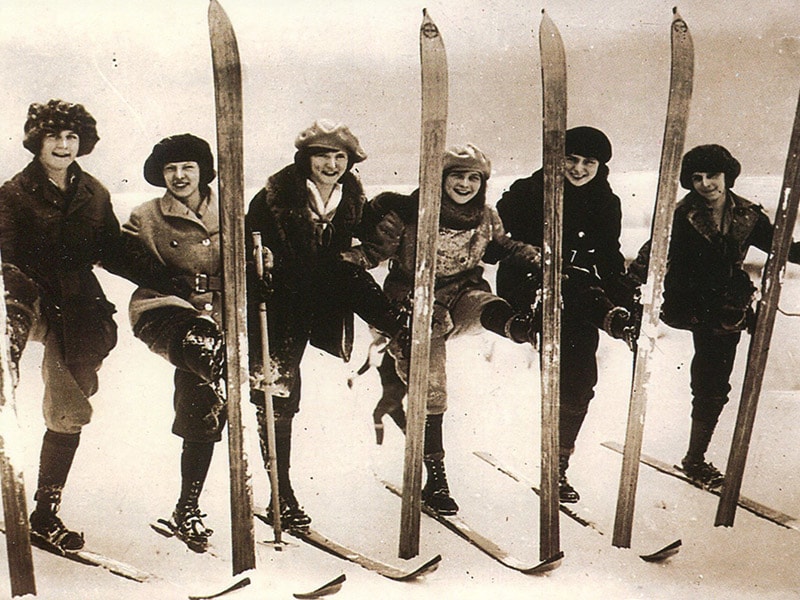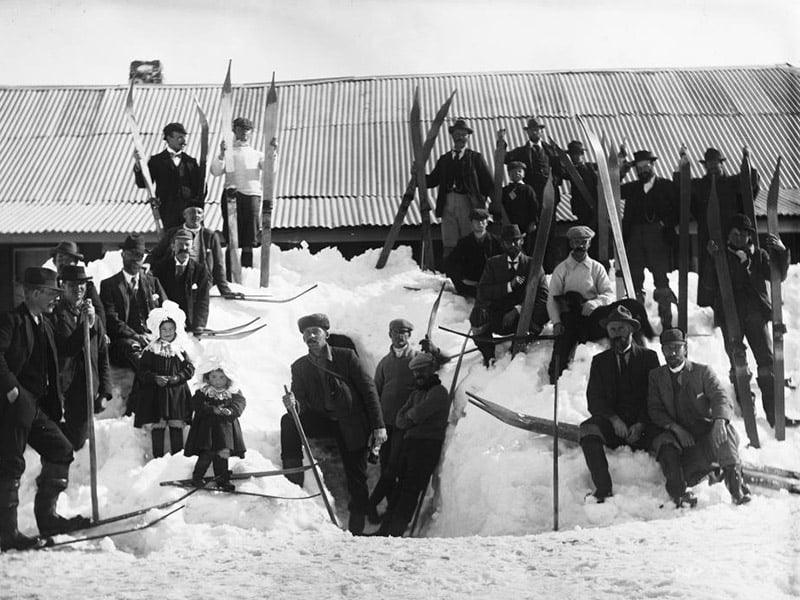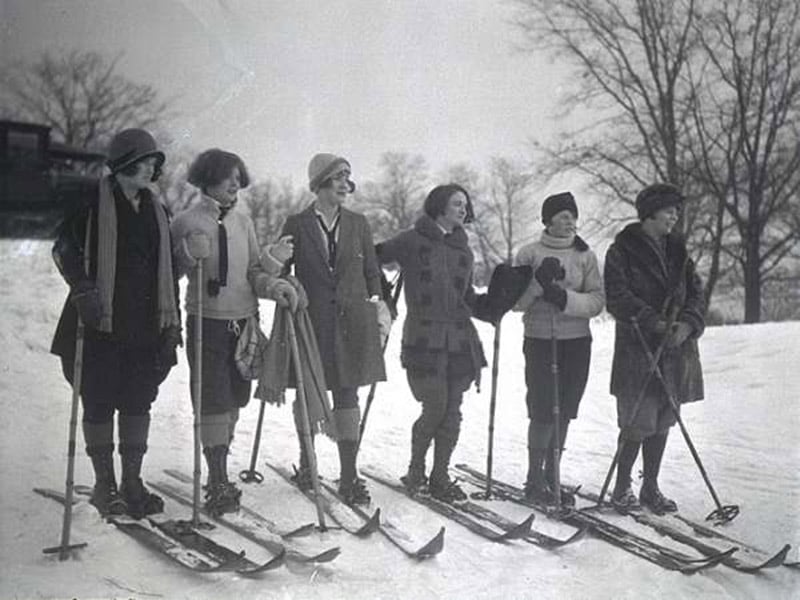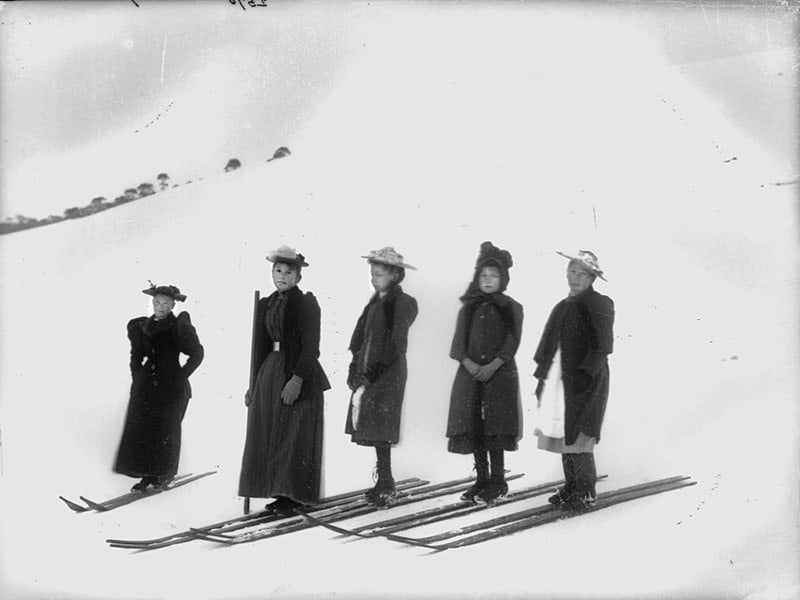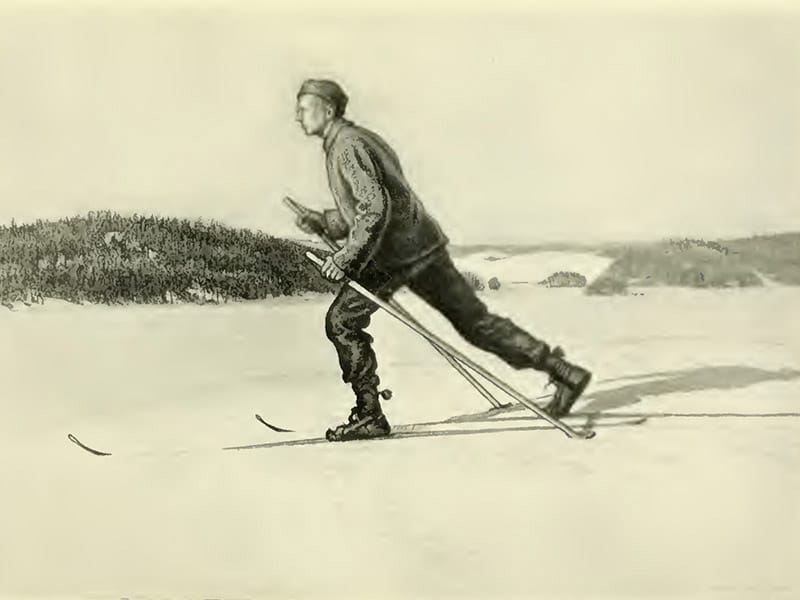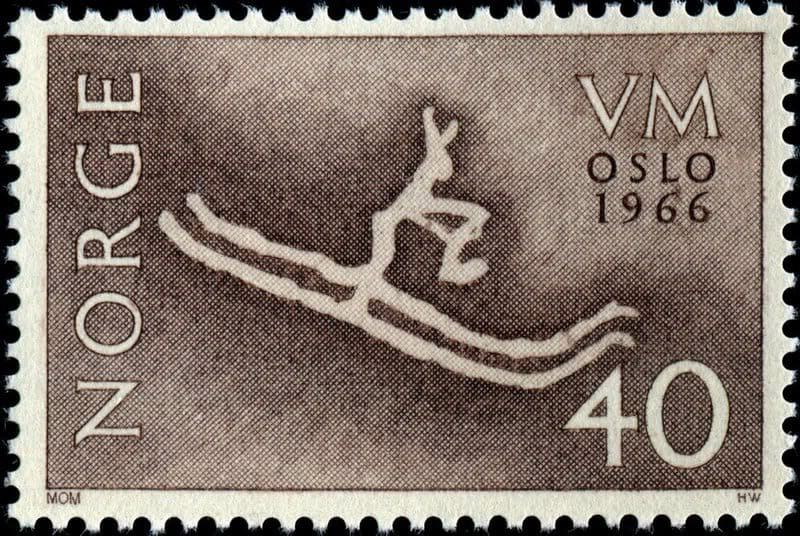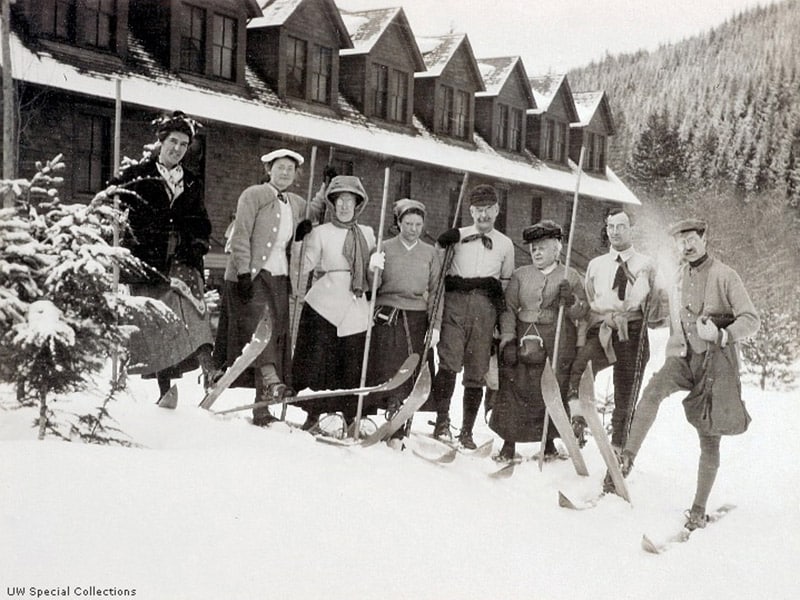My insane aesthetic sense always found the sportswear clothing (with a unique exception for fencing) extremely ugly and ridiculous. When I was young I used to be forced by my open air fanatic family to spend all my long-awaited Christmas holidays on frozen and hostile mountain slopes.
At that time I considered winter sports and those who practiced them some sort of deflected population I had nothing to share with.
At that time I considered winter sports and those who practiced them some sort of deflected population I had nothing to share with. When I reached the age to decide at least my apparel I finally opted for second hand clothes and accessories, the choice that soon led me to wear absurd Russian fur hats and black tights. Retro outfits became my only flag of resistance against winter sports and fluorescent 80’s colors.
The day I saw my first Telemark documentary I thought I was dreaming. I finally saw some beauty in the craziness of the Alps amusement and of course it had a retro taste. We have to remember that skiing was invented to move around in a nasty environment that in winter time was preventing the poor mountain inhabitants to have a decent life for a good portion of the year.
The first time a human being decided to transform a necessity into entertainment Telemark was invented. The big turn was bindings that gave mobility to the skier heels making him able to perform curves going down the slope.
The rest is history. A few decades ago somebody dusted off the technique of these pioneers of downhill skiing and in order to properly celebrate the event decided to perform it with the traditional clothes.
If you watch one of the videos below you can’t resist the seductive harmony of a totally different way of intending this sport that looks like a dance often played in a couple.
Here we have a short interview with my dear friend Paola Dyhan who lives in Livigno in the very north of Italy, practically on the Swiss border and has been practicing for some time Telemark.
Betti: Dhyan let me dream and tell me you have a tall and sinuous partner with whom, in sunny days, dressed as a 1800s alpine woman, perform this dance in pristine snow!!!
Dhyan: Of course, and more than one!
Betti: Ok, with this image in my eyes let’s try to know something more about this sport. Tell us when and how Telemark was born.
Dhyan: Telemark is the name of a Norwegian region were this sport was born in the middle of 1800s. At that time skiing was just a way to cross wide, flat areas covered with snow. Before Telemark was invented it was very hard to curve or stop while skiing. When skiers had to face a slope they tended to use a long stick as it was a rudder and in case of a very steep slope they were obliged to walk all the way down. Telemark instead allowed easy changes of direction, thus opening the door to the descent and speed. This technique opened the way to the first ski races.
Betti: Do you want to tell us how you started?
Dhyan: I was bored with the normal skiing techniques; I was not interested in going up and down the slops fast and alone. Telemark is not just a skiing method with a free heel but I do think it represents a life style. Skiing this way is like dancing on both powder or compact snow, on a slope or on a plain area. It doesn’t have to do with the speed anymore but it’s a way to ski with other people, share the amusement, wait for each other, get in contact with the nature, go back to the source, feel free.
Betti: As you said before from a strictly technical point of view the essential feature of this discipline is that the heel should be free to make the curve. When you started Telemark was there already suitable equipment or did you have to adapt skis and bindings already existing?
Dhayn: Yes, when I started modern skies and boots were already existing as well as teachers ready to give you lessons. It was easy!
Betti: I think that the skiing environment has changed a lot in the last few years. In my opinion people has become very aggressive and very little respectful towards the other skiers. How do people consider Telemark skiers with their old fashion style?
Dhyan: Usually we provoke curiosity and interest because the basis of our sport is respect for everything, for nature and for everybody else. It’s a little like going back to old time when there were no ski lifts and cable cars, people were climbing the slopes with seals skins to enjoy the thrill of the descent.
Betti: Do a lot of foreigners come to Livigno to practice this sport? And which areas of the world do they come from?
Dhyan: I would say everywhere…. Australia, Usa, New Zealand. South America, North and East Europe. I must say that the number is increasing in the last few years.
Betti: Is there a Telemark school for kids or is it a discipline that you learn after you have acquired the more traditional ones?
Dhyan: Kids can start skiing when they are three years old but for Telemark it is better to wait until they are six or seven.
Betti: Do you have a particular event in the course of the year dedicated to Telemark in Livigno?
Dhyan: There is an event which is held every spring, “THE SKIEDA”, the International Festival of Telemark that took place for the first time in 1994. In our dialect this word means “skiing” and it’s open to everybody that want to participate, skiers and not skiers. The Skieda (Free Heel Fest) is not just a festival but one of the most important events for thousands of fans from all over Europe and beyond. A week of demonstrations, events, movies, music, parties, situations like “The Trepallina”, the “transhumance” and “The Feast of Fire” are now entered in the heart of Livigno as appointments sharing of friendship and contact between skiers and nature. Each year it has a theme, the last in 2014 for the twentieth edition was “The Brotherhood”. I just received an e mail from the “Telemark Club Livigno” announcing the next Skieda in March 2015, the theme will be “COMICS”. We will also organize courses for children, mothers and residents throughout the season.
Betti: What is the fundamental characteristic of a good Telemark skier?
Dhyan: There is no good Telemark skier because this discipline is a free expression, everyone uses his own style. It’s different from other techniques: it allows you to climb, do cross country, mountaineering, and downhill at the same time.
Betti: Tell me the truth: how does it feel when it hovers like that, full of harmony and lightness?
Dhyan: Exactly as you say. I feel a sense of lightness, freedom and harmony and when I ski with the traditional dress it is like asserting my femininity, it’s a dance that makes me fulfilled and happy
Betti: What about knees and thighs at the end of the day?
Dhyan: Let’s say that you have to train a bit; at the beginning it’s a little tiring, you stop frequently and go slower. After a while your muscles get fit and you have no problem. The nice part of it is that in Telemark you forget expectations and performance; you simply enjoy the day, the snow and your friends. At the end of the day a nice cold beer pays you back for all the hard work!!! I look forward to seeing you in Livigno…. I run a nice hotel and I’ll help to make the experience unforgettable… ask for Paola!!!
Betti: Ok you’ve convinced me… I will see you in March!
Elisabetta Chiesi
To make a reservation at Paola’s hotel check out her web site:
Hotel Helvetia
Via Plan 415
23030 Livigno (SO)
tel.: 0039 0342970066
email: [email protected]
Web site: http://www.infolivigno.it/
[socialWarfare]

